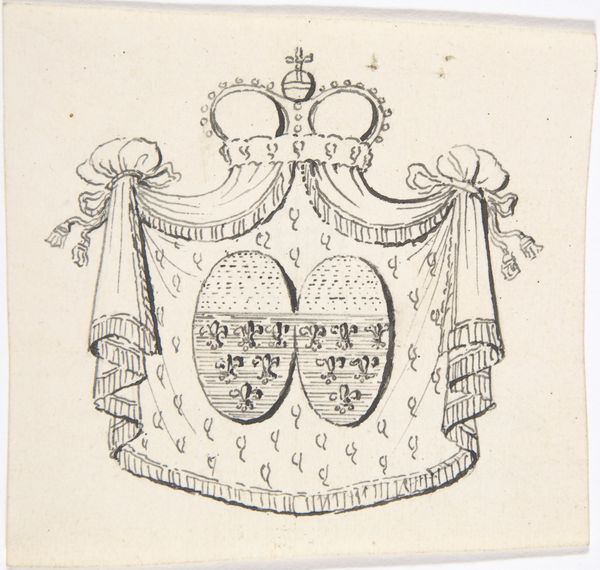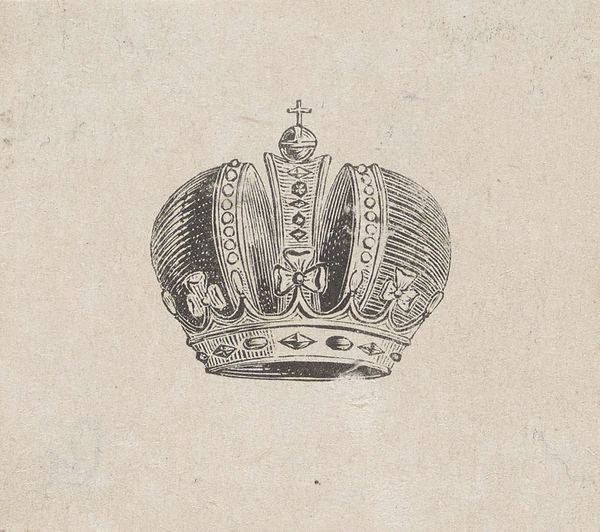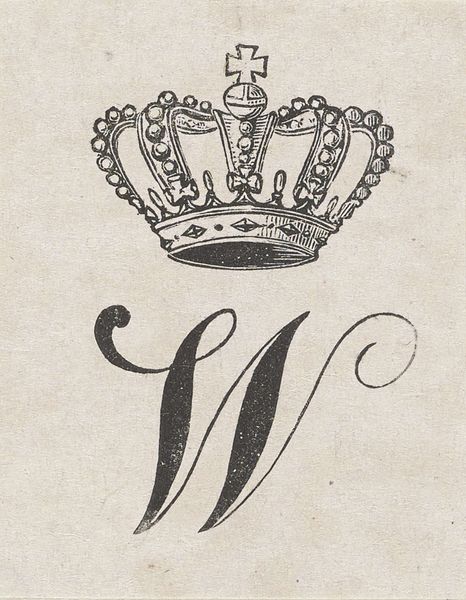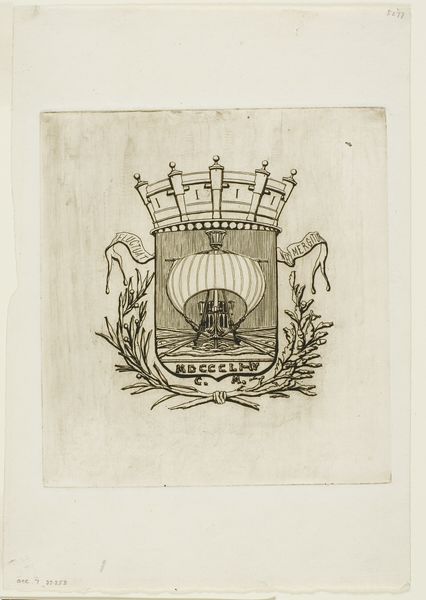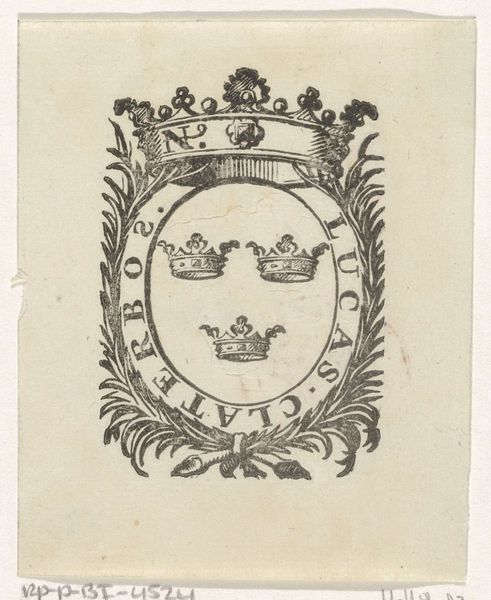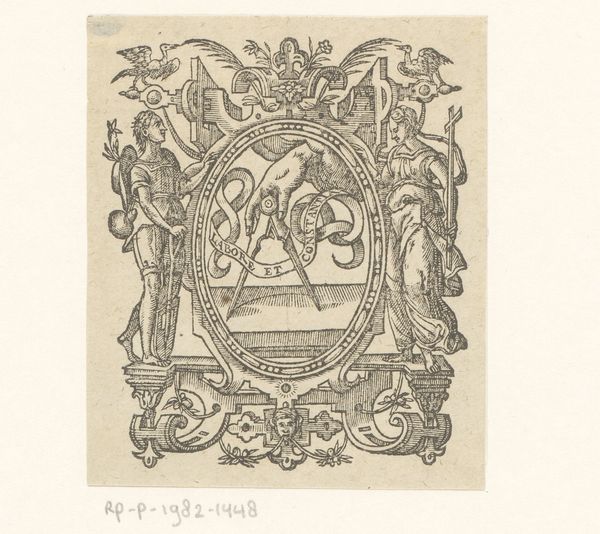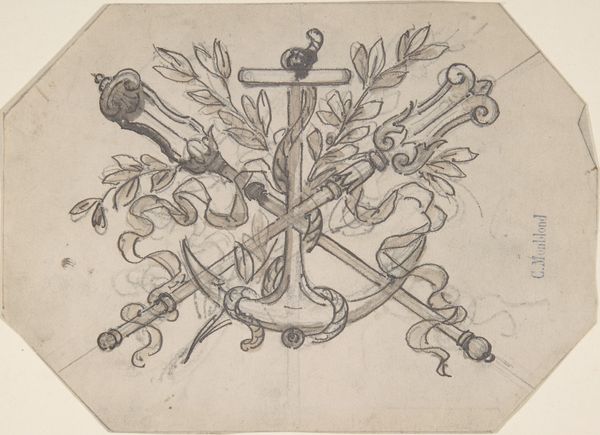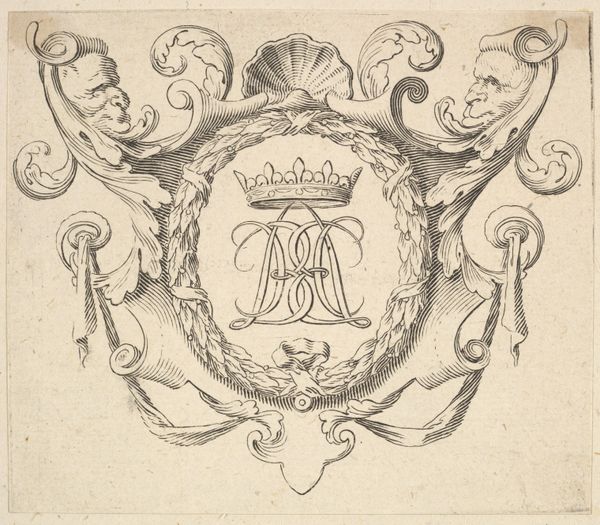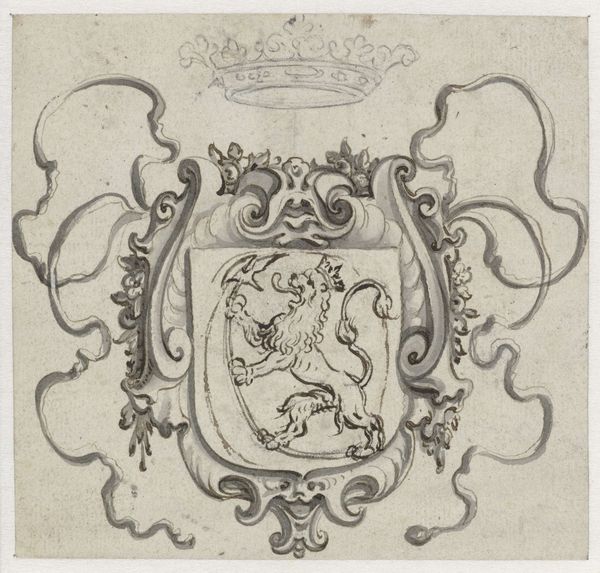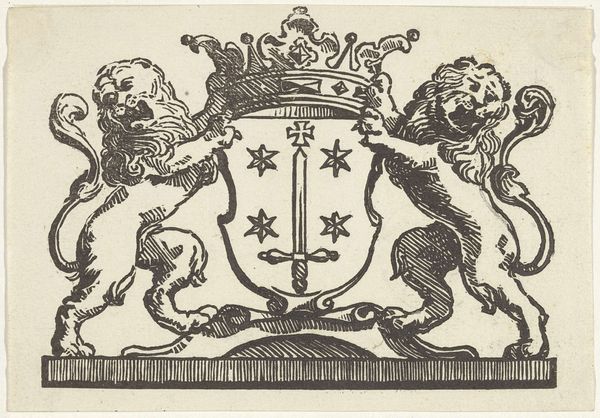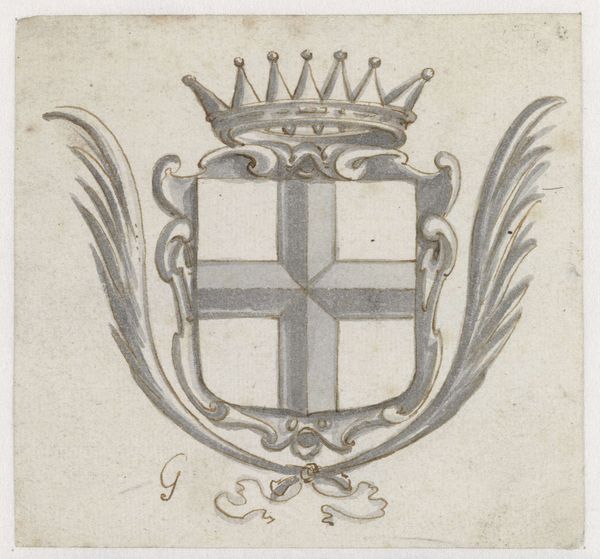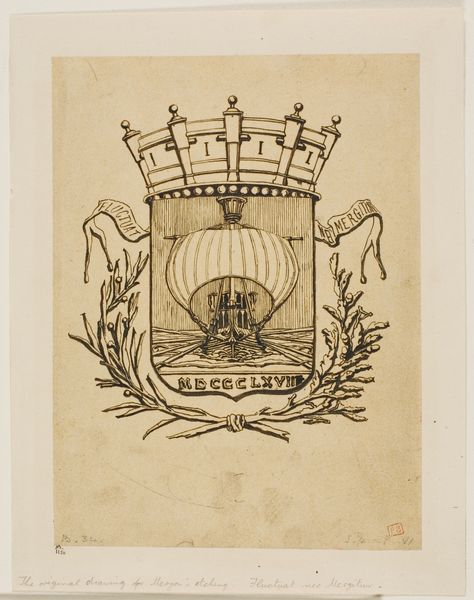
Dimensions: height 31 mm, width 34 mm
Copyright: Rijks Museum: Open Domain
Curator: This piece is a 17th-century pen and ink drawing simply titled "Vignet met een kroon," or "Vignette with a Crown." It is by an anonymous artist. Editor: There is something immediately austere about the drawing. Its simplicity almost feels defiant given the typical regal connotations we might expect. Curator: It is fascinating how the artist uses such precise line work to construct this symbol of power. I'm especially drawn to the hatching which defines the volume, a really economical use of the medium. It feels very process oriented, the construction itself becomes the subject in many ways. The paper is also worn and stained; it certainly contributes to the drawing's aged feeling, and really adds depth to our understanding of the conditions under which the image was created and consumed. Editor: Exactly! I see in that crown not just monarchy, but the oppressive structures that maintain hierarchies. Look at those evenly spaced pearls along the top rim—they strike me as uniform expectations, of imposed societal order. Consider that it comes from the 17th century; during that period many countries consolidated royal power through brutal colonial enterprises that suppressed other identities and modes of self-governance, it is critical to address the injustices propagated under the pretense of divinely sanctioned rule, the crown's supposed bearer. Curator: That said, there is a undeniable mastery in the penmanship itself; notice the control in the delicate curves of the fleur-de-lis, contrasting with the rougher, thicker lines outlining the overall form. The materials – the ink, the paper, the pen – are humble, but wielded with remarkable skill to evoke ideas of grandeur and authority. This work shows how something inexpensive may still be imbued with tremendous value and communicate a wealth of meaning; its power lying, in some part, within its means. Editor: Indeed. And by dissecting such potent symbolism, we begin to examine how those social contracts were visually reinforced to make them palpable. The crown, expertly drafted though it may be, symbolizes an era rife with issues of control and class oppression. We must actively recognize whose labor sustained and supported these lavish signifiers of power while their struggles are frequently overlooked in conventional narratives. Curator: Precisely. This work challenges our modern sensitivities precisely because we have become estranged from older social arrangements based in inequality; we can explore that by studying craft and materiality. Editor: Yes, and in approaching it critically, we actively dismantle antiquated systems, questioning inherited paradigms that perpetuated power dynamics throughout history and challenge enduring inequalities. Curator: Well, I think looking closely like this definitely opens our eyes. Editor: I agree. Recognizing is the first step, action, the next.
Comments
No comments
Be the first to comment and join the conversation on the ultimate creative platform.

